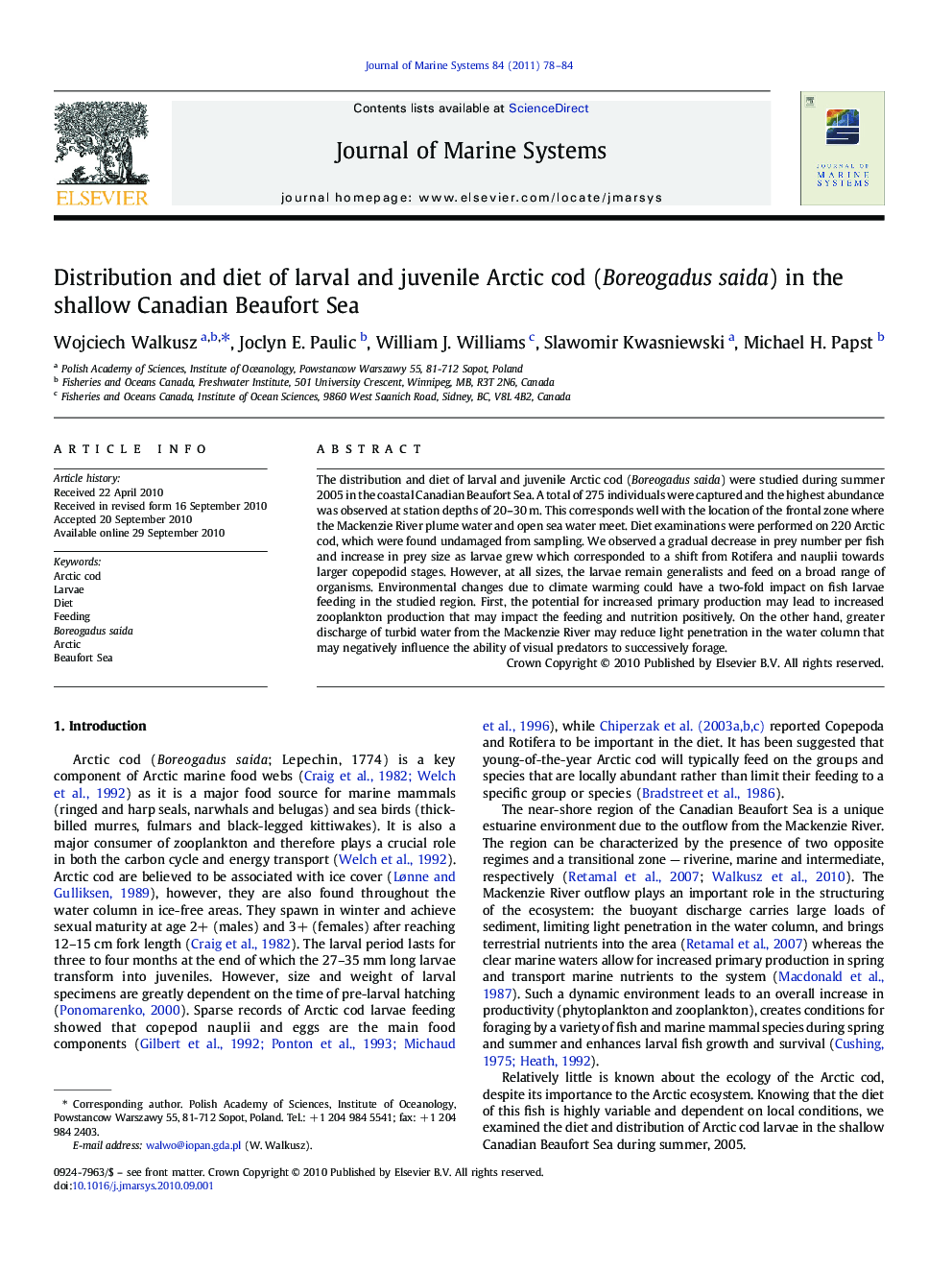| Article ID | Journal | Published Year | Pages | File Type |
|---|---|---|---|---|
| 4548425 | Journal of Marine Systems | 2011 | 7 Pages |
Abstract
The distribution and diet of larval and juvenile Arctic cod (Boreogadus saida) were studied during summer 2005 in the coastal Canadian Beaufort Sea. A total of 275 individuals were captured and the highest abundance was observed at station depths of 20-30Â m. This corresponds well with the location of the frontal zone where the Mackenzie River plume water and open sea water meet. Diet examinations were performed on 220 Arctic cod, which were found undamaged from sampling. We observed a gradual decrease in prey number per fish and increase in prey size as larvae grew which corresponded to a shift from Rotifera and nauplii towards larger copepodid stages. However, at all sizes, the larvae remain generalists and feed on a broad range of organisms. Environmental changes due to climate warming could have a two-fold impact on fish larvae feeding in the studied region. First, the potential for increased primary production may lead to increased zooplankton production that may impact the feeding and nutrition positively. On the other hand, greater discharge of turbid water from the Mackenzie River may reduce light penetration in the water column that may negatively influence the ability of visual predators to successively forage.
Related Topics
Physical Sciences and Engineering
Earth and Planetary Sciences
Oceanography
Authors
Wojciech Walkusz, Joclyn E. Paulic, William J. Williams, Slawomir Kwasniewski, Michael H. Papst,
